Actualités
News

-
01/12/20212021-12-01T14:43:202021-12-01T14:43:20Exposition virtuelle : l'EFEO fête ses 120 ans de recherches en Asie Exposition virtuelle : l'EFEO fête ses 120 ans de recherches en Asie>> read more
-
28/10/20212021-10-28T14:28:592021-10-28T14:28:59Exposition virtuelle : Lisu de Thaïlande Exposition virtuelle : Lisu de Thaïlande>> read more
-
18/10/20212021-10-18T15:08:422021-10-18T15:08:42Publication : Mémoires de l'Inde Publication : Mémoires de l'Inde>> read more
Bienvenuesur le site de la photothèque de l’EFEO
Welcometo the photo library of the French School of Asian Studies
Dès la création de l’École française d’Extrême-Orient (EFEO), les chercheurs ont ressenti le besoin de se doter d'outils de recherche et de compléter les notes et les croquis par la photographie. Une photothèque s’est donc constituée en même temps que l’École se dotait d’une bibliothèque de recherche.
À partir de 1933, l’EFEO s’adjoint les services d’un photographe professionnel, Jean Manikus. Secondé par Nguyen Huu Tho, il crée un service photographique qui fonctionne de 1933 à 1959, constituant ainsi les importants fonds patrimoniaux de l’EFEO. Lorsque, sous la pression des événements politiques, l’EFEO transfère son siège de Hanoi à Saigon en septembre 1954, une copie du fonds photographique est envoyée à Paris où le siège de l’École est définitivement installé en 1961. La photothèque de Paris est ainsi créée, prenant la relève de celle de Hanoi.
Aujourd’hui, plus de 180 000 clichés y sont conservés. Les supports, reflet de l’évolution des techniques photographiques, sont de nature différente : plaques de verre au gélatinobromure d’argent, le plus souvent stéréoscopiques ; négatifs ; diapositives ; tirages argentiques et couleurs ; clichés numériques. Les thèmes traités illustrent la richesse des disciplines de l’EFEO : architecture, archéologie, épigraphie, ethnographie, histoire de l’art… Du fait de l’implantation historique de l’École et de ses missions, le Cambodge et le Vietnam sont particulièrement bien illustrés ainsi que, dans une moindre mesure, le Laos. La création de nouveaux Centres EFEO à partir des années cinquante (Inde, Chine, Indonésie, Thaïlande, etc.) augmente et diversifie les archives.
Ces photographies ont un intérêt scientifique majeur, complétant rapports de missions et journaux de fouilles. La campagne de numérisation des fonds entreprise en 2002 se poursuit assurant ainsi la conservation des photographies et leur diffusion auprès de la communauté scientifique et du grand public.
Pour toute reproduction, merci de prendre contact avec la photothèque. La structure générale du site (textes, graphismes etc.) est protégée par la législation sur la propriété intellectuelle. Toute reproduction, toute représentation totale ou partielle, toute utilisation, toute adaptation ou modification de ces éléments par quelque procédé que ce soit, par quelque personne que ce soit et par quelque moyen que ce soit sans l'autorisation expresse de l'EFEO est strictement interdite (voir la rubrique Crédits http://collection.efeo.fr/ws/web/app/report/a-propos.html ).
Cliquez ici pour découvrir les collections
Avertissement : les notices des photographies présentées sont en cours de relecture et peuvent être incomplètes, nous vous remercions de votre compréhension.
_______________
L’École française d’Extrême-Orient, une des cinq écoles françaises à l’étranger, est avant tout un établissement de recherche. Seul établissement français entièrement consacré aux études asiatiques, l’EFEO incarne depuis plus d’un siècle une tradition de recherche fondamentale sur le terrain, de l’Inde au Japon. L’EFEO s’adaptant aux transformations des sociétés sur lesquelles elle travaille, s’ouvre également à des problématiques contemporaines.
Ses 42 enseignants-chercheurs ont vocation à travailler en Asie, sur le terrain de leurs études. L’EFEO a progressivement développé un réseau de 18 centres et antennes dans 12 pays asiatiques lui permettant d’intégrer un important réseau de chercheurs et d’universitaires asiatiques.
L’EFEO a son siège administratif, sa bibliothèque centrale - l’une des principales dans le domaine orientaliste en Europe - ses archives et sa photothèque à Paris. (site EFEO)
Since the École française d’Extrême-Orient (EFEO) was originally established, researchers have felt the need to equip themselves with research tools and to use photography to complement their field notes and sketches. Indeed, at the same time as the School developed a research library, it also set up a photo library.
In 1933, the EFEO procured the services of Jean Manikus, a professional photographer. Seconded by Nguyen Tho, he founded a photographic department that was active from 1933 to 1959, thus helping to constitute the EFEO’s large patrimonial collection. When, in September 1954, under the pressure of political events, the EFEO transferred its headquarters from Hanoi to Saigon, a copy of the photo collection was sent to Paris, where the School’s headquarters was definitively established in 1961. The Paris Photo Library was thus created, taking up the baton from its Hanoi forebear.
Today, the EFEO Photo Library contains over 180,000 pictures. The materials used, a reflection of the evolution of photographic techniques, are of various kinds, including silver bromide-gelation glass negatives, most of them stereoscopic; negatives; slides; silver and colour prints; digital images. The themes addressed illustrate the breadth of disciplines in which the EFEO is active, encompassing architecture, archaeology, epigraphy, ethnography, and art history. For historical reasons associated with the geographical locations of the EFEO’s original missions, Cambodia and Vietnam are particularly well represented in the Photo Library, as is, to a lesser degree, Laos. The setting up of new EFEO centres, a process that began in the 1950s (India, China, Indonesia, Thailand, etc.), had the effect of diversifying and enlarging the archives.
Accompanying mission reports and diaries of archeological digs, the photographs are of major scientific interest. The digitalization project initiated in 2002 continues, ensuring that the photographs are conserved and diffused amongst the scholarly community and the public at large.
For all reproductions, please contact the Photo Library. The general structure of the site (texts, graphics, etc.) is protected by intellectual property law. All reproduction, total or partial representation, and all use, adaptation or modification of these elements by any procedure whatsoever, by any person whatever, and by any means whatsoever without the express permission of the EFEO is strictly forbidden (see “Credits” section:http://collection.efeo.fr/ws/web/app/report/a-propos.html ).
Click here to view the collections
Warning: The descriptions of the photographs are currently under revision and may be incomplete. Thank you for your understanding.
The École française d’Extrême-Orient, one of five French Schools operating outside the country, is above all a research institution. The only French establishment entirely dedicated to Asian studies, the EFEO has, for over a hundred years, incarnated a tradition of fundamental research in the field, from India to Japan. Adapting to transformations in the societies on which it concentrates, the EFEO also analyses contemporary problematics.
The School’s forty-two professor-researchers all work in Asia in the regions on which their studies are focused. The EFEO has gradually built up a network of 18 centres and branches in 12 Asian countries, which gives it access to a multitude of Asian researchers and academics.
The EFEO’s administrative headquarters, central library – one of the largest Asian Studies libraries in Europe –, archives and Photo Library are all located in Paris. (EFEO website).
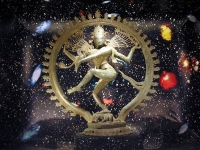
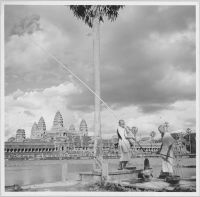



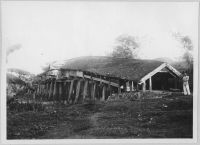
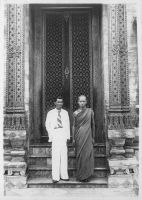

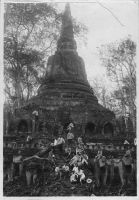
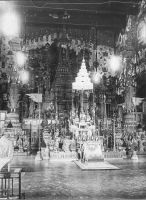
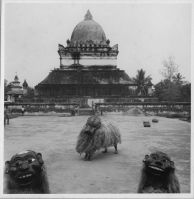
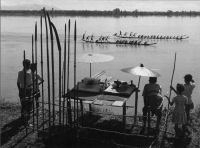
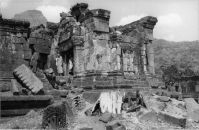
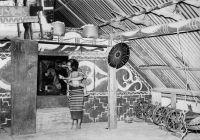

 Copyright© WebMuseo 2013 - 2024
Copyright© WebMuseo 2013 - 2024